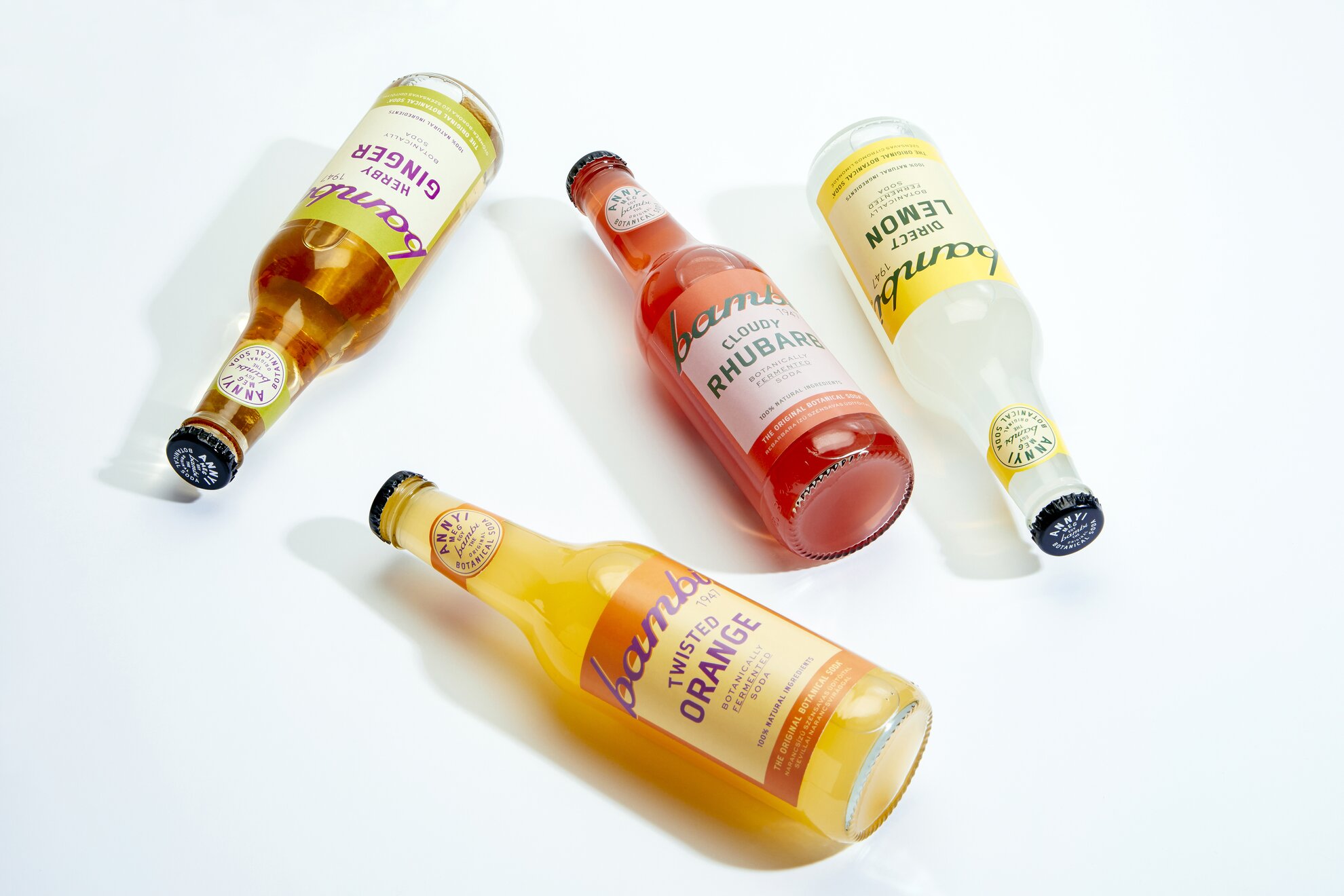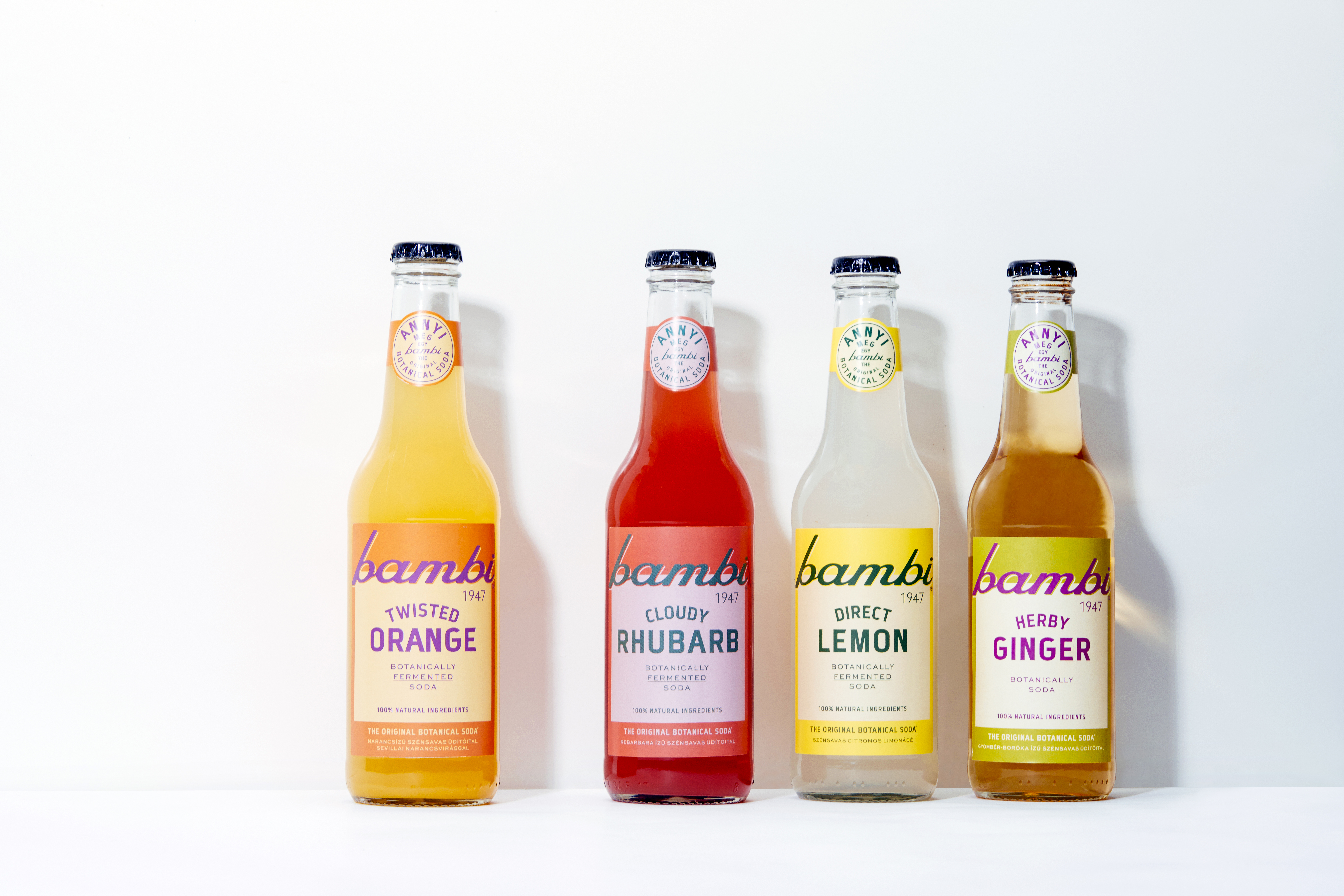Sipped at beaches and lidos across the land for two generations, Bambi was even celebrated in song, the evergreen children’s hit, Pancsoló kislány. Made from synthetic ingredients, this cult soft drink from the Sixties with its high sugar content was typically unhealthy, but no one particularly cared and everyone, somehow, survived. There was one flavour and one flavour only, orange, and that’s how everyone liked it. Then along came Coke and that was the end of Bambi.
Now, 50 years later, Bambi is being awoken from its Socialist-era slumber. The launch of the new Bambi has been preceded by four years of research and development as well as brand building. The labelling, visual elements and internal components all match the latest trends.
Bambi 2.0 is based on 100% natural ingredients. The fermentation lasts for seven days, after which natural botanical ingredients such as herbs, natural flavours, sugar, spring water and fermented ginger juice are added, mixed thoroughly and cooked, taking care to ensure that the flavours are interwoven in perfect harmony with the bubbles. The old Bambi had a sugar content of 12% – the new one is kept to a minimum. In addition, the new Bambi will be available in not one but four flavours: ginger-juniper, rhubarb, orange with Seville orange blossom, and citrus lemon.

Whether the Pancsoló kislány herself, Eszti Kovács, 11 when she made the record, can be coaxed out of retirement remains to be seen. After her novelty pop song blasted out of every pocket transistor from 1960 onwards, her family whisked her off for a life of complete obscurity in Szeged, never to be seen again.




